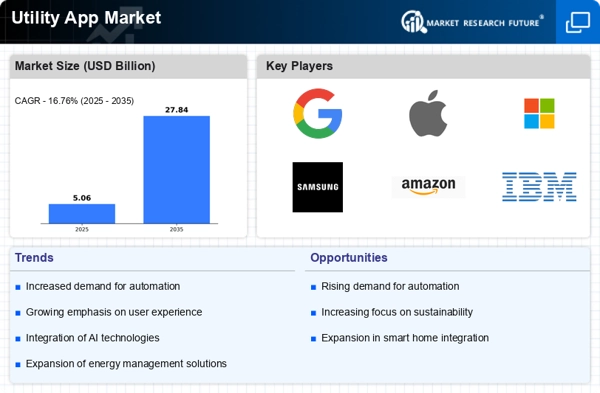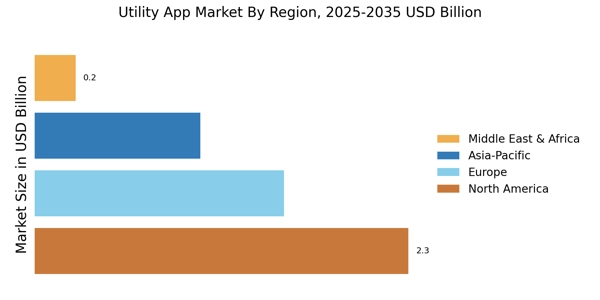Advancements in IoT Integration
The integration of Internet of Things (IoT) technology is transforming the Utility App Market. IoT-enabled devices allow for real-time monitoring and management of energy consumption, providing users with immediate feedback on their usage. This capability not only enhances user experience but also promotes proactive energy management. Data suggests that the IoT market in the utility sector is expected to grow substantially, with projections indicating a compound annual growth rate of over 20% in the coming years. As more consumers adopt smart home technologies, the Utility App Market is poised to benefit from this trend, as apps that leverage IoT capabilities become increasingly essential.
Regulatory Support and Incentives
Government regulations and incentives play a crucial role in shaping the Utility App Market. Many regions are implementing policies that encourage the development and adoption of utility apps, particularly those focused on energy efficiency and sustainability. These regulations often include financial incentives for consumers who utilize energy-saving technologies, thereby increasing the appeal of utility apps. Furthermore, as governments set ambitious targets for reducing greenhouse gas emissions, the Utility App Market is expected to benefit from heightened interest in applications that support these initiatives. This regulatory environment fosters innovation and investment in utility app development.
Rising Demand for Energy Efficiency
The Utility App Market experiences a notable surge in demand for energy-efficient solutions. As consumers become increasingly aware of their energy consumption patterns, utility apps that provide insights into usage and suggest ways to reduce waste are gaining traction. Reports indicate that energy-efficient technologies could potentially reduce energy consumption by up to 30%. This trend is further fueled by government initiatives aimed at promoting energy conservation, which encourages the adoption of utility apps. Consequently, the Utility App Market is likely to see a significant increase in user engagement as individuals seek tools that help them manage their energy use more effectively.
Growing Consumer Awareness and Education
Consumer awareness regarding energy consumption and sustainability is on the rise, significantly impacting the Utility App Market. As individuals become more educated about their energy usage and its environmental implications, they are increasingly seeking tools that empower them to make informed decisions. Educational initiatives and campaigns aimed at promoting energy conservation are contributing to this trend. Data indicates that consumers who are educated about energy efficiency are more likely to adopt utility apps that provide actionable insights. This growing awareness is likely to drive demand for innovative features within utility apps, further propelling the Utility App Market forward.
Increased Focus on Renewable Energy Sources
The Utility App Market is witnessing a shift towards renewable energy sources, driven by both consumer preference and regulatory frameworks. As individuals and businesses seek to reduce their carbon footprints, utility apps that facilitate the integration of renewable energy solutions are becoming more prevalent. Market analysis indicates that the renewable energy sector is expected to grow significantly, with solar and wind energy leading the charge. This transition not only aligns with global sustainability goals but also presents opportunities for utility apps to offer features that help users track and manage their renewable energy usage. The Utility App Market is likely to evolve in response to this growing demand.


















Leave a Comment